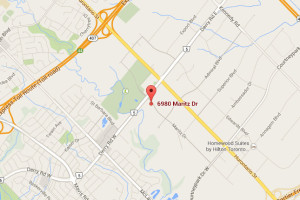As a Hosted Service Provider, Future 2000 delivers a combination of traditional IT functions such as infrastructure, applications (Software as a Service), security, monitoring, storage, Web development, website hosting and email, over the Internet or other wide area networks (WAN). Future 2000 combines the abilities of an application service provider (ASP) and an Internet service provider (ISP).
This approach enables customers to consolidate and outsource much of their IT needs for a predictable recurring fee. xSPs that integrate Web publishing give customers a central repository to rapidly and efficiently distribute information and resources among employees, customers, partners and the general public.
SUPERIOR NETWORKING – BY DESIGN
Without the best network supporting them, the best web applications, server infrastructures and operating system environments are crippled. From its genesis, the Zero-Downtime Network was designed with one consideration in mind—providing an unequaled and uninterrupted experience for our customers and their end users.
DESIGNED WITH A SINGLE PURPOSE
Every aspect of the Zero-Downtime Network is designed to optimize the networking environment for managed hosting customers with demanding applications. That is our network’s sole purpose and the fundamental difference between it and our competitors’ networks. Network services companies work in many lines of business, forcing them to compromise speed, efficiency and reliability in order to serve the needs of internal customers with vastly different agendas. Our advantage is our singular attention to hosting. That means that the performance of our customers’ applications is never sacrificed for any other purpose.
DESIGNED FOR RELIABILITY
The Zero-Downtime Network’s redundancy and optimized performance begins with the right network topology and communication partners. Working with numerous transport providers allows traffic to enter and leave our network from physically different points with different providers. These multiple entrance and exit points allow the network to distribute packets of information through the most effective routes. By maintaining low overall network utilization at all times, the network proves resilient to even the most severe traffic spikes.
To guard against single points of failure at the shared network level, Future 2000 Systems Inc. has partnered with various Internet Service Providers to deploy a multi-failover network configuration. This unique configuration fortifies the network’s topology, further guaranteeing high availability. It can even be extended into a customer’s specific VLAN environment to protect against single points of failure within their hosted environment. Mission-critical applications can be mirrored across multiple data centers, providing multiple levels of disaster recovery options.
DESIGNED FOR SECURITY
Security is a primary consideration in our network’s topology. Rackspace runs physically disparate networks in each of our data centers. Should a catastrophic event impact one of our data centers and local networks, the remaining data centers and networks continue to operate unaffected. Significant resources are allocated to ceaselessly developing solutions that secure our networks from intrusion. Preventier™, one security solution developed by Rackspace, Cisco and Arbor Networks, filters out malicious traffic and negates DDoS attacks targeting our customers’ applications.
DESIGNED TO CONSTANTLY IMPROVE
Networks operated by hosting providers should constantly evolve based on new usage patterns, traffic pathways, technologies and threats. Maintaining the status quo and remaining rooted in traditional methodologies and technologies delivers an insufficient experience to our customers. It’s why Rackspace’s Proactive Network Management guides the Zero-Downtime Network.
Based on route monitoring and end user performance, Proactive Network Management continually improves our network’s topology and configuration. Able to monitor traffic leaving our network, it evaluates off-network performance by testing all source and destination IP addresses.
This perpetual testing identifies the most efficient routes and initiates real time adjustments in our routing tables. Over time, the Zero-Downtime Network’s topology evolves, favoring the network providers that best serve each customer’s traffic needs.


